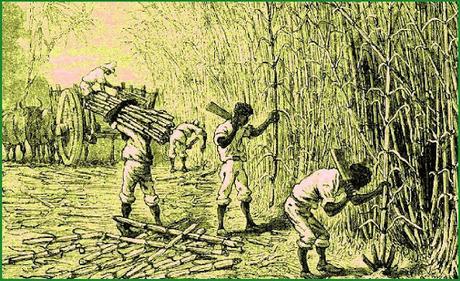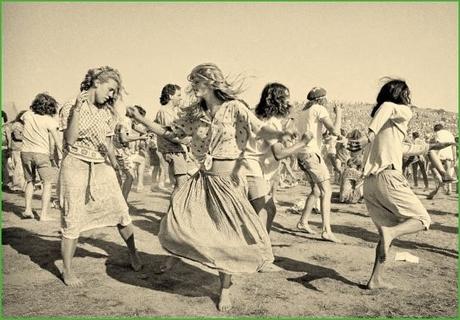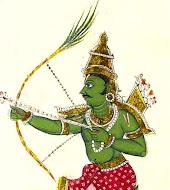I've long loved the music of Fred Neil and Jerry Garcia/Grateful Dead and they both sing songs (audio links appended further on) which contain such lines as "Shake it sugaree " and "Didn't we shake sugaree ". What's that all about? I've often wondered. Very well, this Thanksgiving week I determined to play lyric detectorist and get to the bottom of the mystery. Read on, Macduff.

cutting sugarcane
I assumed, not unreasonably I think, given the geography and the phraseology - sugar and dancing?- that this might have something to do with the deep south cane industry: plantations, slavery, hard graft, harvest time, a bit of celebration and light relief for poor, exploited black folks. Sadly, the anecdotal evidence is scarce.The Jordanaires released a pop song in 1957 titled "Sugaree " but that appeared to be the name or nickname of a sweetheart, so I'm dismissing it as a red herring. The first significant mention in song is Elizabeth Cotten's "Shake Sugaree ". Cotten (1893-1987) was a self-taught African-American folk and blues singer/songwriter who began playing guitar and writing songs in her teens. She is most well-known for "Freight Train ", used recently as the title music for Wes Anderson's 'Asteroid City ' movie. It's not clear when she wrote "Shake Sugaree " as she was performing for decades before recording her material in the 1960s as part of the great American folk revival. Of the lyric, Cotten merely stated: "To tell the truth, I don´t know what got it started, but it must have been something said or something done.""Shake Sugaree " was released in 1965 and once available in record stores and on the radio was soon covered by a roster of folk and blues musicians, becoming a staple of folk sets across the country, giving rise to the afore-mentioned versions, by Fred Neil in 1966 on his eponymous second LP, and ultimately the referenced lyric by Robert Hunter (Grateful Dead lyricist) on Jerry Garcia's eponymous debut solo LP of 1972.
The Cotten song is all about being poor, pawning everything worth pawning, and then shaking sugaree, which I took to mean having a good time regardless of tomorrow and the consequences. I assumed it was metaphorical... but then I dug up a couple of references that suggest plausible explanations.
The first is that sugaree actually derives from the French "charivari " (or chivaree/shivaree), referring to a folk ritual of making rowdy, discordant music outside the house of newlyweds, a custom that French colonists would certainly have brought to the New World in the 19th century.
The second references a curious practice of sprinkling sugar on the floor and then dancing on it to make a percussive sound. "At house parties they used to shake sugar on the floor so it would crunch when stepped on, hence 'to shake sugaree' meant to have a good time dancing. Even today, there’s a dance step called the 'sugar step' which is an action like grinding sugar on the floor."

shaking sugaree
I'll settle for that second explanation, though I hold to my original instinct that shaking sugaree could not have been possible without cane plantations in the first place and the irrepressible spirits of poor, exploited black folks determined just to have a good time in the small off-duty hours.Here's the Fred Neil version of the sugaree song. I always marvel at his voice: I've Got A Secret
And here is Garcia's more upbeat rendition as featured at many a Grateful Dead gig and more apt for the kind of hippy shaking those ladies above are rapt in: Sugaree
To finish, a strange new poem fresh from the imaginarium (and with the usual caveat that it is subject to revision). Kト[adeva is a Hindu god of desire, eroticism and pleasure. He carries a bow made of sugarcane and fires arrows of flowers. His is the sweet intoxicating dance of love.
Arcane SugarFirst the temple, ramshackle and rundown,green with its glow of vegetation and opento the winds of chance. Then the template
intricate and sacred spread on freshly swept
old boards. Next the precious sugar, gradedfrom powdery white at this mandala's heartthrough yellowed grains to coarsest brownsaround the boundaries of the holy art whereants fear to encroach. All waits in readiness.With sundown, at the bidding of Kト[adeva,revellers arrive, sweetened already with rumto take positions on the floor, motionless ingraceful repose until the drums begin givingpermission for bodies to sway, feet to stampto the sweetest beat, eyes shine, hearts pumpinhibitions fade away, everyone dancing intoreverie, shaking sugaree, until there is no meor you no yesterday tomorrow only evermorethis timeless whirling moment of affirmationof liberation from the chains that bind as lovefloods in waves upon the magic crystal shore.

Thanks for reading. Shake it, S ;-) Email ThisBlogThis!Share to TwitterShare to Facebook
